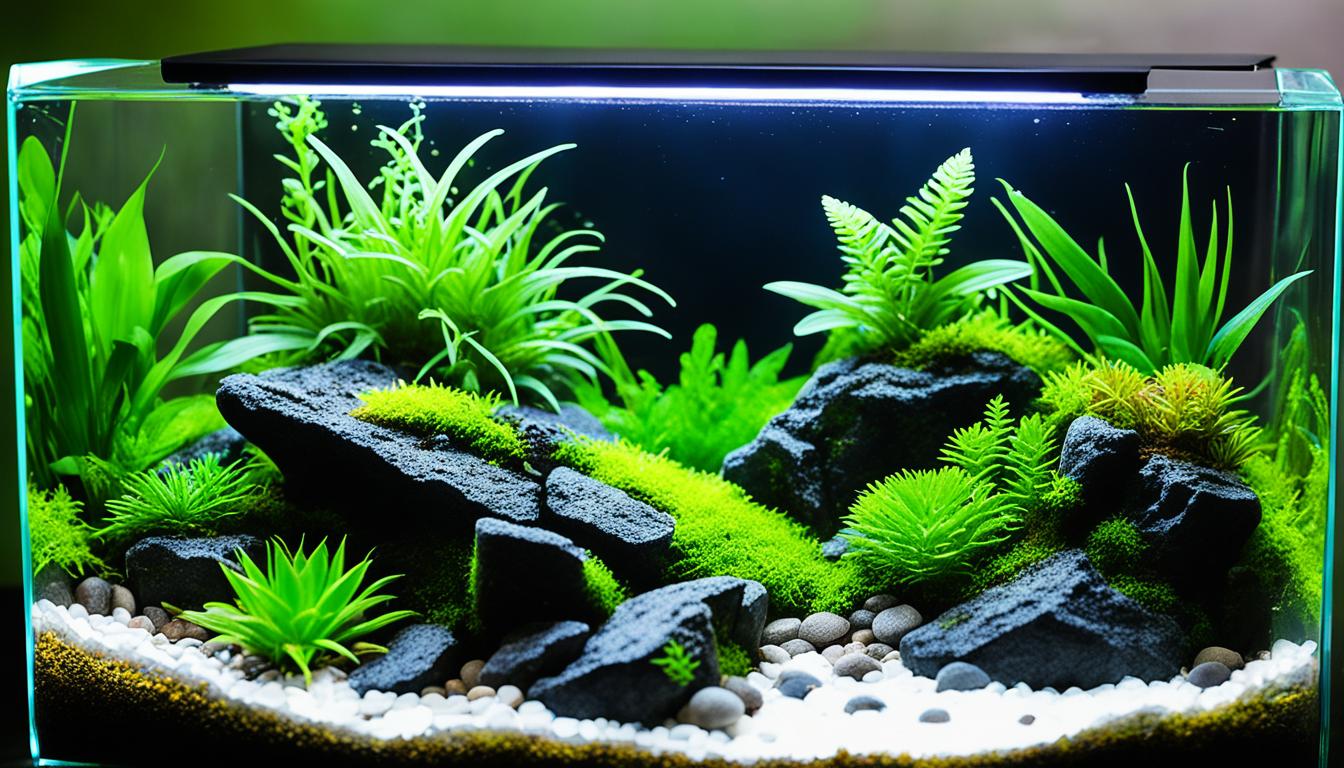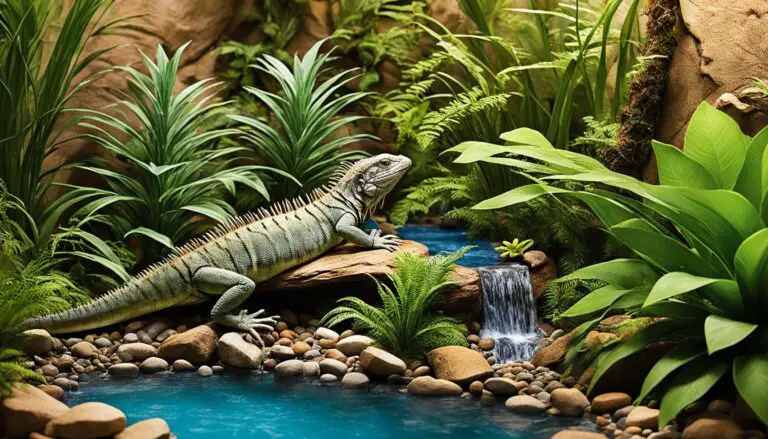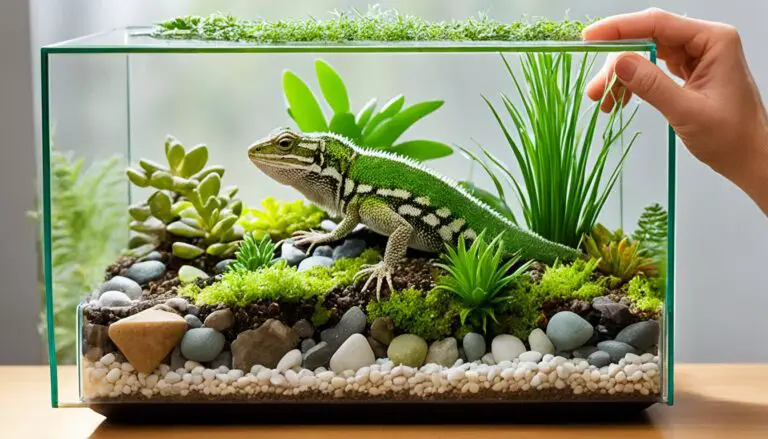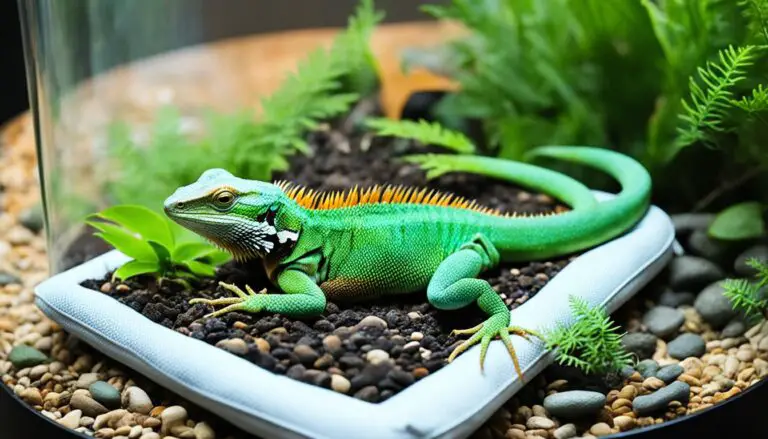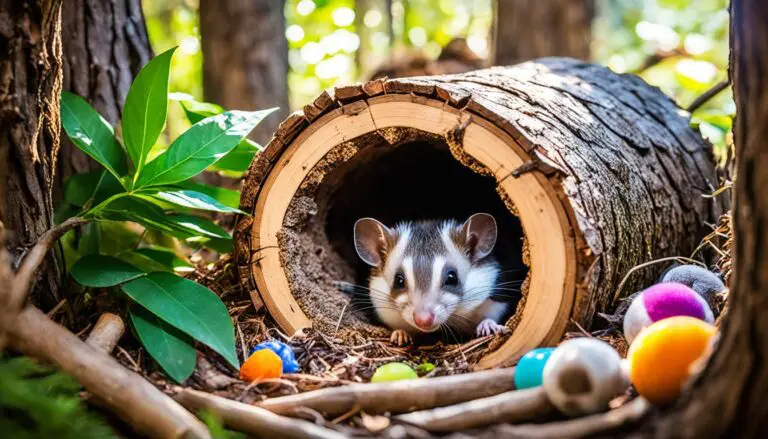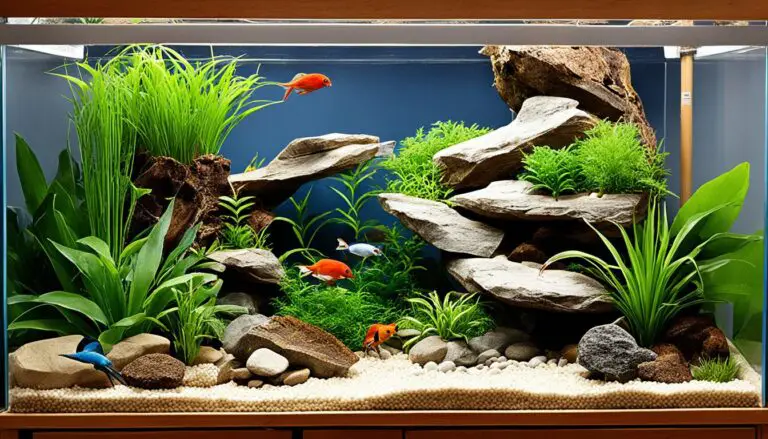Exotic Pet Housing for Amphibians: Best Tips & Tricks
Keeping exotic pets like reptiles and amphibians has become increasingly popular in recent years. To provide them with the best possible housing, it is important to learn about their natural history and specific habitat requirements. This article will provide valuable tips and tricks for creating the perfect exotic pet housing for amphibians, including designing naturalistic enclosures and choosing essential vivarium elements.
The Importance of Understanding Natural History
Understanding the natural history of amphibians is crucial for their care in captivity. In the early days of the reptile community, keepers took a keen interest in the natural behaviors and habitats of their pets. They knew details such as the Latin names, geographic range, climate preferences, feeding habits, and breeding behavior. By studying and replicating these conditions, keepers were able to provide the best possible care for their pets.
General Housing Requirements
When it comes to housing amphibians, there are some general requirements that apply to all species. By providing a properly sized enclosure, a temperature gradient, and a safe and secure environment, you can create the ideal habitat for your exotic pets.
Properly Sized Enclosure
Amphibians have diverse needs when it comes to space. It’s essential to provide them with an enclosure that is appropriate for their size and natural behaviors. A properly sized enclosure allows for activities like climbing, exploring, and swimming, enabling your amphibians to exhibit their natural behaviors to the fullest.
Temperature Gradient
Creating a temperature gradient within the enclosure is crucial for amphibians. Different species have specific temperature requirements, and a gradient allows them to regulate their body temperature effectively. By providing warmer and cooler areas, your amphibians can move between different zones and thermoregulate according to their needs.
Safe and Secure Environment
Amphibians are sensitive creatures that require a safe and secure environment for their well-being. It’s important to design the enclosure with hiding places, such as caves, logs, and plants, to provide them with a sense of security and reduce stress levels. Ensuring that the enclosure is escape-proof and free from potential hazards is vital to keeping your amphibians safe.
Creating a habitat that meets these general housing requirements will help ensure the health and happiness of your exotic amphibian pets. Now let’s explore how to further enhance their habitat by emulating their natural environment.
Habitat Emulation
Creating a habitat that closely resembles the natural environment of amphibians is essential for their health and well-being. To achieve this, attention must be given to three key elements: substrate, lighting requirements, and freshwater supply.
Substrate
The choice of substrate plays a crucial role in replicating the natural habitat of amphibians. Different species have different substrate preferences based on their natural habitats. For desert-dwelling amphibians, sandy or rocky substrates can mimic the arid conditions they are accustomed to. On the other hand, forest-dwelling species thrive on moisture-retentive substrates, such as leaf litter or moss.
By selecting the appropriate substrate, you can create an environment that promotes natural behaviors and provides the necessary comfort for your amphibians.
Lighting Requirements
Lighting requirements vary among amphibian species. While some amphibians may not have specific lighting needs, others require adequate UVB light for vitamin synthesis and overall health. UVB light plays a vital role in calcium metabolism and helps prevent metabolic bone diseases that can occur in captive amphibians.
It is crucial to research the lighting needs of your specific amphibian species and provide the appropriate UVB lighting. This can be achieved through the use of specialized reptile UVB bulbs or fluorescent tubes designed for amphibian habitats.
Freshwater Supply
Amphibians require access to freshwater for drinking and maintaining proper hydration. There are several ways to provide this essential resource in their enclosure. Misting systems are an effective method of delivering freshwater, as they simulate rain and allow amphibians to drink droplets from leaves and surfaces. Alternatively, you can provide a shallow water bowl, making sure it is cleaned regularly to maintain water quality.
Remember to monitor the humidity levels in the enclosure to ensure proper moisture levels, as this is important for maintaining the health of your amphibians. Humidifiers or humidity gauges can be used to regulate humidity levels effectively.
By paying attention to substrate choices, lighting requirements, and freshwater supply, you can create a habitat that closely resembles the natural environment of your amphibians, promoting their overall well-being and allowing them to thrive in captivity.
Enclosure Types
When it comes to housing amphibians, there are a variety of enclosure types to consider. Each type has its own unique features that cater to specific species and their needs. The three most popular enclosure types for amphibians are terrariums, vivariums, and paludariums.
Terrariums
Terrariums are commonly used for terrestrial or semi-arboreal species and can be made of glass or plastic. These enclosures provide a controlled environment for amphibians and allow owners to easily observe their pets. Terrariums can be customized with substrates, plants, and decorations to create a suitable habitat for different species. They are a great choice for amphibians that spend most of their time on land.
Vivariums
Vivariums are designed to replicate the natural habitats of amphibians by incorporating living plants and natural elements. They create a small ecosystem within the enclosure, similar to the species’ natural habitat. Vivariums provide a more realistic and visually appealing environment for amphibians. The combination of live plants, natural lighting, and humidity control makes vivariums ideal for species that require a high level of moisture and live in forested or tropical environments.
Paludariums
A paludarium is a specialized enclosure that combines terrestrial and aquatic elements, making it suitable for semi-aquatic or aquatic species. These enclosures have both land and water areas, allowing amphibians to exhibit their natural behaviors. Paludariums provide a unique opportunity to create a captivating habitat that includes water features, such as a small pond or stream, alongside terrestrial elements like plants and branches. They are perfect for amphibians that require access to both land and water, such as frogs and newts.
“Terrariums, vivariums, and paludariums offer different options for creating suitable habitats for amphibians, depending on their specific needs and behaviors.”

By choosing the right enclosure type for your amphibian, you can provide them with a comfortable and stimulating environment that mimics their natural habitat. Consider the specific needs of your pet species and their natural behaviors when deciding on the most suitable enclosure type.
Creating an Enriched Habitat
To ensure the overall well-being of amphibians, it is crucial to create an enriched habitat that replicates aspects of their natural environment. By designing a complex and stimulating environment, owners can promote natural behaviors, encourage physical exercise, and provide mental stimulation for their pets.
One important aspect of creating an enriched habitat is the replication of the amphibian’s natural habitat. This can be achieved by offering vertical space for climbing and foliage for hiding. Amphibians are skilled climbers, and providing structures such as branches or rocks in the enclosure allows them to engage in their natural climbing behaviors. Hiding spots, such as plants or artificial shelters, give amphibians a sense of security and mimic their natural hiding places in the wild.
In addition to providing appropriate climbing and hiding opportunities, it is also essential to offer a variety of textures within the habitat. Amphibians have highly sensitive skin and derive tactile stimulation from various surfaces. Incorporating different textures such as rocks, moss, and leaf litter in the enclosure provides sensory enrichment for the animals. This variety of textures allows them to explore and interact with their environment, promoting their overall well-being.
Creating a complex environment involves thoughtful design and arrangement of elements within the enclosure. By incorporating different levels, such as branches or platforms, owners can offer additional vertical space for climbing and provide a multi-dimensional habitat that closely resembles the natural environment of the amphibians. This complex design encourages physical exercise as the animals explore and move around their habitat.
Amphibians thrive in environments that mimic their natural habitat, offering a complex and enriched space where they can engage in their natural behaviors and lead healthy, fulfilling lives.
In summary, when designing an enriched habitat for amphibians, it is important to focus on natural habitat replication, complex environment design, and variety of textures. By closely replicating their natural environment, providing opportunities for climbing and hiding, and offering a diverse range of textures, owners can create a stimulating and fulfilling living space for their amphibian pets.

| Key Elements of an Enriched Habitat | Benefits |
|---|---|
| Vertical space for climbing | Promotes natural behaviors and physical exercise |
| Foliage for hiding | Provides a sense of security and reduces stress |
| Variety of textures | Offers tactile stimulation and environmental exploration |
| Complex environment design | Mimics natural habitats and encourages natural behaviors |
Substrate and Lighting
The choice of substrate is crucial for creating a suitable habitat for amphibians, as it should mimic their natural environment and accommodate their specific needs. Different species have different substrate requirements based on their natural habitat and behavior. For forest-dwelling species, such as tree frogs, using live mosses and ferns can create a lush and humid environment. On the other hand, desert-dwelling species, like toads, may require sandy or rocky substrates to replicate their arid habitat.
It is important to avoid using substrates that can be easily swallowed by amphibians, as they may cause intestinal blockages and pose a serious health risk. Care should be taken to select substrates that are appropriate for the species and size of the animal, ensuring it promotes both their physical health and natural behaviors.
In addition to the substrate, lighting plays a crucial role in the well-being of amphibians. While most amphibians do not require UVB lighting, some species, like turtles and certain frogs, benefit from low levels of UVB radiation. UVB light helps amphibians synthesize vitamin D3, which is essential for calcium metabolism and overall health. It is important to research the specific lighting requirements of the species you are keeping and provide the appropriate lighting setup in the enclosure.
Ensuring a varied diet is also essential for the health of amphibians. Offering a diverse range of prey items, such as insects, small invertebrates, and occasionally small vertebrates, helps provide the necessary nutrients and prevents nutritional deficiencies. A varied diet ensures an optimal balance of vitamins, minerals, and proteins, promoting the overall well-being of the amphibians.
Light and Heat
While most amphibians do not require UVB radiation, some species may benefit from low levels of UVB light. It is important to provide the appropriate temperature range for the species, ranging from 75-82°F for tropical species and 65-74°F for temperate species. Heat sources such as fluorescent bulbs or ceramic heaters may be necessary to maintain the ideal temperature in the enclosure.
UVB radiation plays a crucial role in the synthesis of vitamin D3, which helps amphibians metabolize calcium and maintain healthy bone growth.
“Proper lighting is essential for amphibians that require UVB radiation, such as many tropical species. UVB light helps simulate natural sunlight, providing the necessary wavelengths for vitamin D synthesis and calcium metabolism.”
It is important to have a temperature gradient within the enclosure, with warmer areas at one end and cooler areas at the other. This allows amphibians to regulate their body temperature according to their needs. Using a combination of heat sources, such as fluorescent bulbs or ceramic heaters, can help maintain the desired temperature range.
It is crucial to monitor the temperature in the enclosure regularly to ensure it stays within the appropriate range for the specific species.

Providing the correct light and heat is essential for the overall health and well-being of amphibians. By mimicking natural sunlight and maintaining the ideal temperature range, you can create a comfortable and thriving habitat for your exotic pet.
Humidity and Water Quality
Proper humidity levels and water quality are crucial for the health and well-being of amphibians. Different species have varying humidity needs, with some requiring daily misting to maintain optimal moisture levels in their environment. Others may benefit from having a water bowl available for drinking and soaking.
To ensure the ideal humidity conditions for your amphibian, it is important to monitor the humidity levels regularly. Using humidifiers or humidity gauges can help you maintain the desired humidity range in the enclosure. This will help prevent dehydration and promote proper shedding for your pet.
Water quality is equally important for amphibians, as their porous skin can easily absorb harmful chemicals or impurities. Regular water testing is recommended to ensure the water parameters are within the appropriate range. To maintain optimal water quality, consider using water treatment products specifically designed for amphibian habitats.
| Humidity Needs | Water Quality | Monitoring Ammonia Levels |
|---|---|---|
|
|
|
By ensuring proper humidity and water quality, you can create a healthy and thriving environment for your amphibian companion.

Conclusion
Creating the perfect housing for exotic pet amphibians is crucial for their health and well-being. By understanding their natural history and specific habitat requirements, you can provide them with a comfortable and thriving living environment. This article has provided valuable tips and tricks for designing naturalistic enclosures, choosing essential vivarium elements, and creating an enriched habitat for your amphibian friends.
When it comes to designing their enclosures, make sure to consider the size and layout that allows for natural behaviors such as climbing and exploring. Providing a temperature gradient within the enclosure and creating a safe and secure environment with hiding places are also important factors.
Additionally, attention should be given to habitat emulation, including the choice of substrate, lighting requirements, and freshwater supply. By replicating their natural habitats, you can help your amphibians feel at home and thrive. And don’t forget to choose the appropriate enclosure type, whether it’s a terrarium, vivarium, or paludarium, based on your amphibian’s specific needs.
Remember, creating an enriched habitat that closely mimics their natural environment is essential. Offering a variety of textures and elements, such as live plants, will not only make their enclosure look beautiful but also promote natural behaviors, physical exercise, and mental stimulation. By following these best tips and tricks, you can provide the best possible housing for your exotic pet amphibians and ensure their long and happy lives.
FAQ
What are the general requirements for housing amphibians?
What should I consider when replicating the natural habitats of amphibians?
What types of enclosures can be used for housing amphibians?
How can I create an enriched habitat for amphibians?
What should I consider when choosing substrate and lighting for amphibians?
What are the temperature and heat requirements for housing amphibians?
How can I maintain humidity and water quality for amphibians?
Source Links
- https://exoticpetvetblog.wordpress.com/2014/06/19/back-to-basics-keeping-pet-reptiles-amphibians/
- https://currumbinvetservices.com.au/a-detailed-guide-on-proper-housing-for-pet-reptiles-and-amphibians/
- http://blogs.thatpetplace.com/thatreptileblog/2013/07/02/keeping-frogs-and-toads-as-pets-creating-a-terrarium-best-amphibian-care-products/
Peter Stones is the founder of Exotic Pets Place, the leading online resource for exotic pet care information.
With over 10 years of hands-on exotic pet ownership experience, he is deeply passionate about sharing his expertise to help others properly care for their unusual pets.
When he's not writing extensively researched articles or connecting with fellow exotic pet enthusiasts worldwide, you can find Peter at home tending to his own beloved menagerie of exotic animals.

